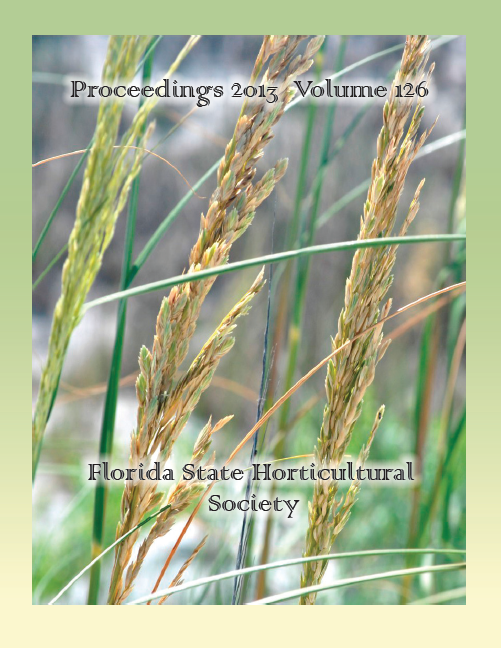Evaluation of Several Bell Pepper (Capsicum annuum) Cultivars Grown under an Open Shaded Structure
Abstract
Many small and large farmers throughout Florida have adopted some type of protected agriculture production in the past 5 to 10 years. Structures used in protected agriculture have traditionally been greenhouses, but more recently, farmers are using high tunnels and open structures covered with shade material. Florida produces nearly 20,000 acres of green bell pepper (Capsicum annuum) in the field each year, making green bell pepper a very valuable commodity. Florida bell peppers are in the market nearly year round, from October to July, but are not available in large supply during the late summer and early fall (July–September) due to high temperature, high humidity, and frequent rainfall during that time. The marketplace prefers that growers consistently supply high quality product for as long as possible. Small, direct-market farmers also seek ways to extend their growing season. However, growing in multiple locations is not generally practical. Therefore, small growers often find the adoption of season-extending cultural practices, such as shade culture, more viable. A bell pepper cultivar trial was conducted under a small open shade structure at the University of Florida, Suwannee Valley Agricultural Extension Center near Live Oak, FL. Peppers were grown in 3-gal plastic pots filled with a composted pine bark soilless media and irrigated and fertilized using a hydroponic nutrient solution. Seventeen cultivars were evaluated for their fruit yield and quality during the 2012 season. Cultivars showed significant differences in the early and mid-season harvests; however, total seasonal yields were not significantly different.

